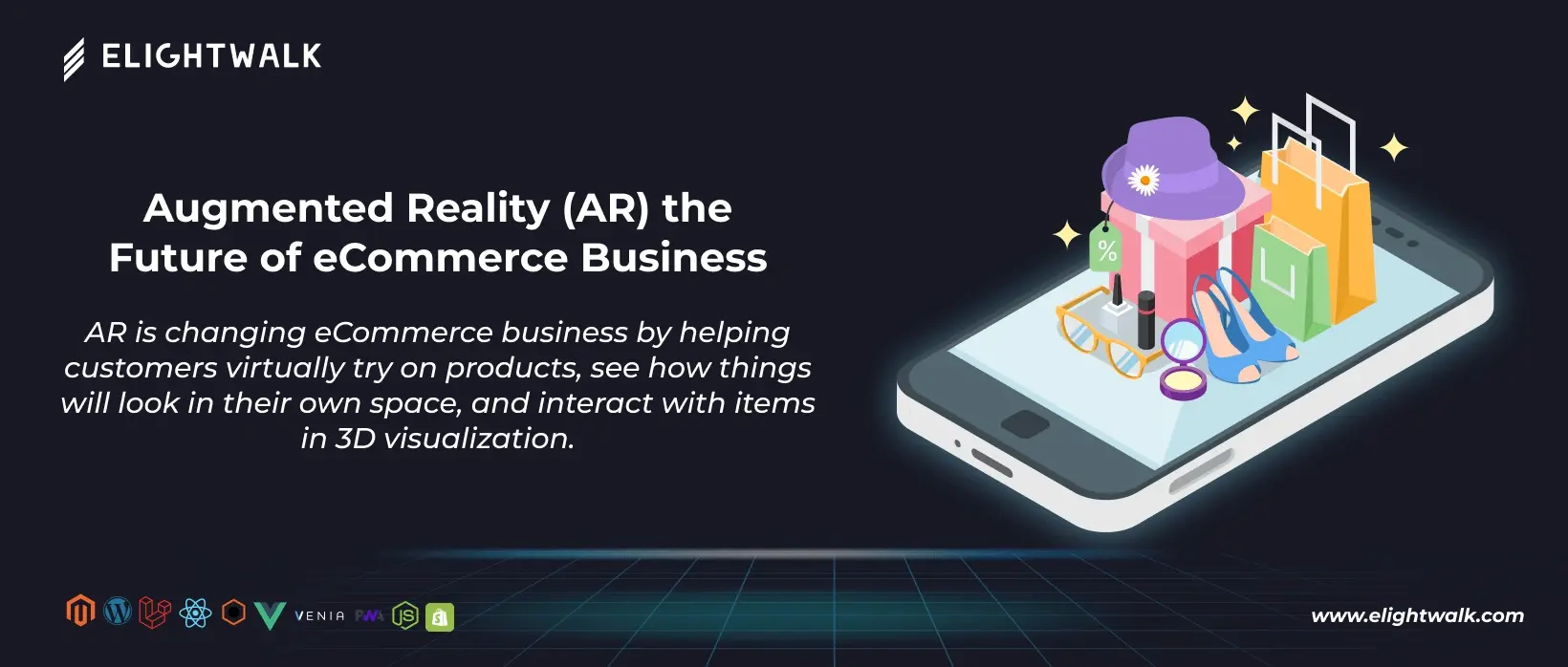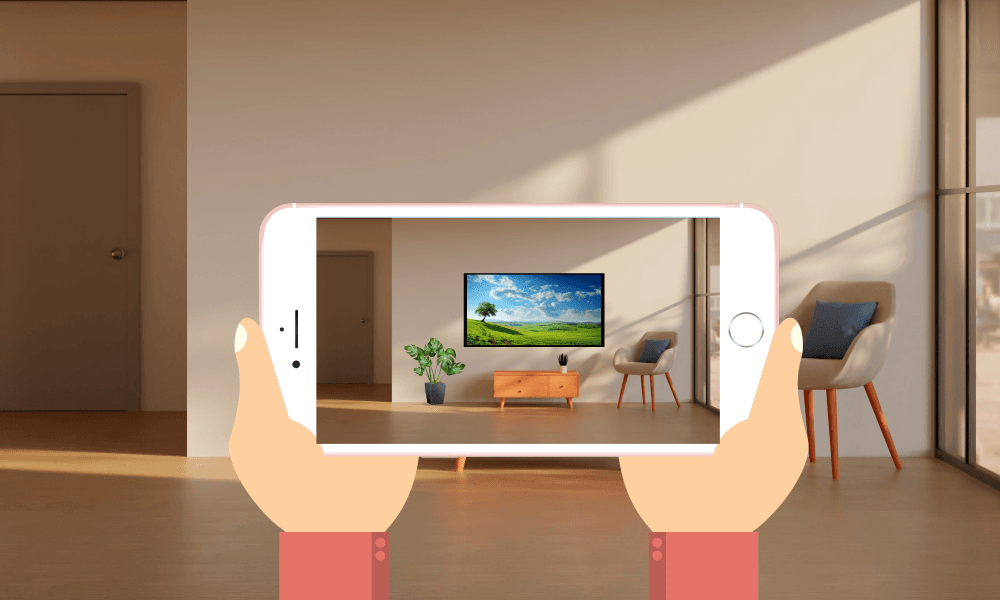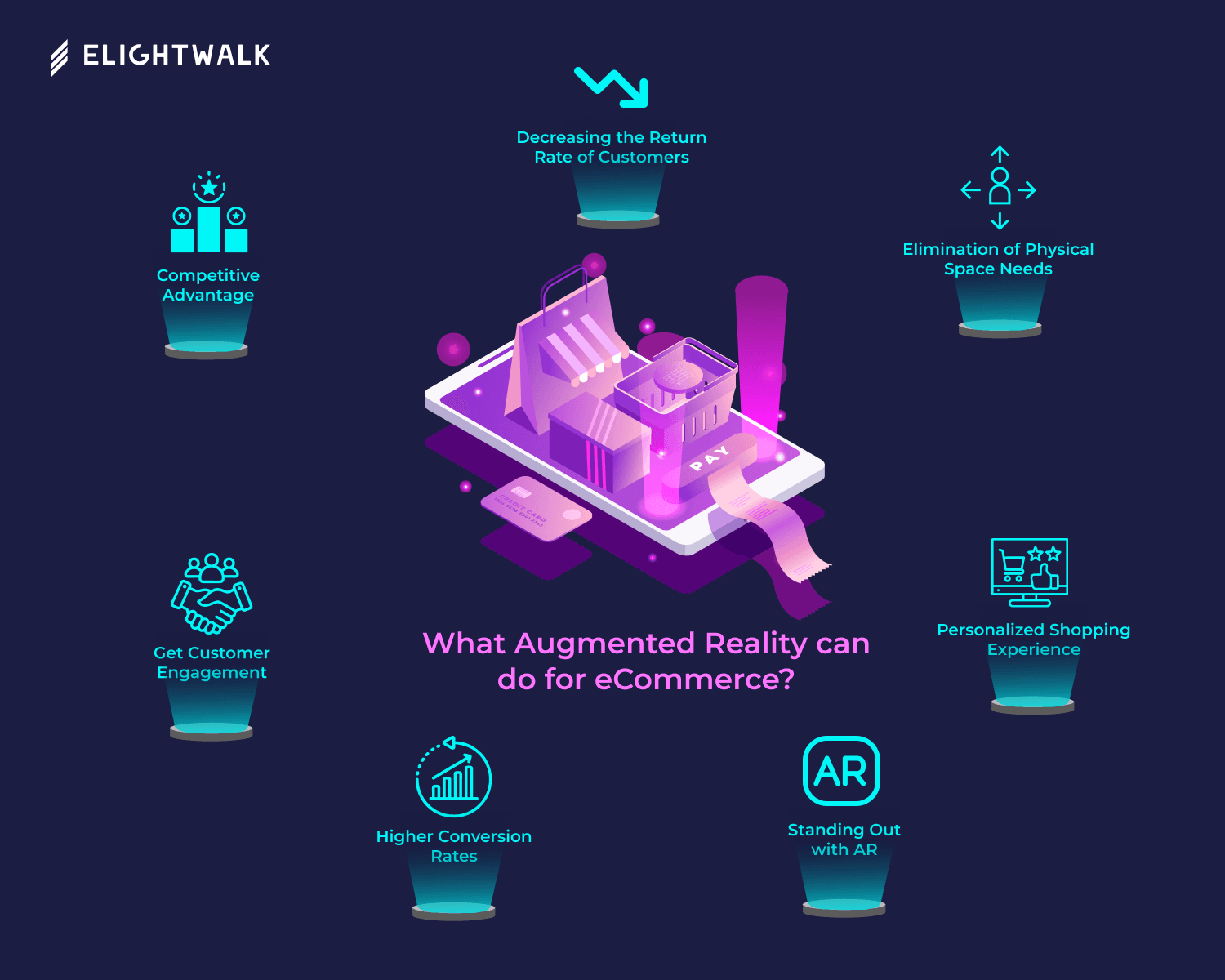The AR feature of eCommerce sites is changing online shopping. It blends digital interaction with real-life experience. AR lets potential customers see a product in real or artificial ways. They can touch, feel, and experience it. They can even find a product in a virtual store, millions of kilometers away.
It can now transform objects you bought only in your studio and make them real. It gives a customer the fashion to see a product in his environment or on his body, which makes shopping more personal and interactive.
Many online retailers are finding that a demand for AR tech is improving user interfaces and boosting sales. AR seems to disrupt the marketing of e-commerce products to the extent that traditional brick-and-mortar retailers may lose their competitive advantage.
If you are still unsure about Augmented Reality in the eCommerce business, consider the following figures:
- 70% of consumers can be convinced about the stand-alone benefits of AR (TechJury).
- 57% of shoppers find it more interesting to buy from AR-related brands (XR Today).
- AR-powered experiences are 200% more engaging than non-AR experiences (ThreeKit).
- A global survey predicts that 45% retailers adapt AR-powered technologies at the end of 2025 (Statista).
The rise of AR technology matches the growth of mobile tech. By 2025, 100% of smartphone users and 75% of the world will use AR daily. Augmented Reality integration in eCommerce systems tends to be the solution to the problem of 94% decrease in conversion rates provided that certain conditions are met. Recent studies have also showcased that 76% of consumers are willing to use AR in daily life. On a surprising note, AR shopping has caught the attention of 92% of Generation Z shoppers, showing rather low resistance to its adoption by the upcoming generation.





